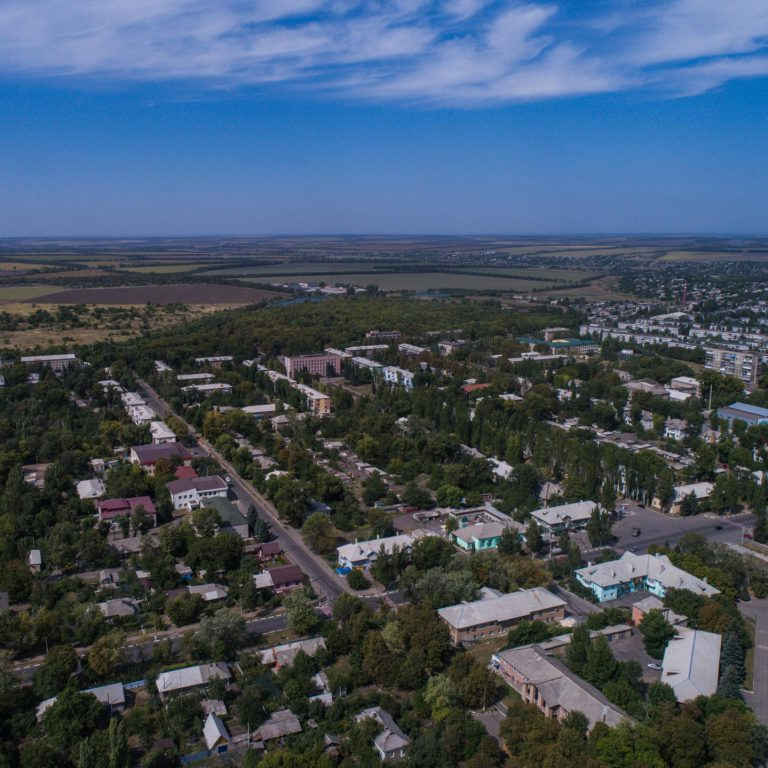Dobropillia is a mining town located 95 km to the west of Donetsk. The separatist movement has not reached it since the beginning of the Russian military intervention in Ukraine in 2014, because the local entrepreneurs and activists organized themselves to protect the integrity of Ukraine. The internally displaced people from the other cities were welcomed here; locals of Dobropillia organized an aid for them. In recent years, the locals have been developing a network of public spaces here in order to make the town more interesting and original.
Art-café Troleibus (Trolleybus – ed.) appeared at the beginning of 2016 in Dobropillia. Back then, Volodymyr Oros, the social entrepreneur, received 200 000 UAH grant from the UNDP (ed.- United Nations Development Programme). He used the grant money to buy the equipment, and paid for the reconstruction and furniture himself:
— I don’t like the situation when NGO receives the money for the project from donors, then reports about the work done and shuts down everything. We wanted our projects to be able to exist afterwards, to at least have an opportunity to pay salaries and to organize events. Therefore, we thought we should establish a coffee shop, which would be a foundation for the youth center.

Volodymyr Oros has been a head of the NGO Dobropillia Youth Centre “Dobro” since 2010. The aim of this organization is to create conditions for creative, sport and cultural development of the local youth:
— Kids of the school age in our city have places for self-development. We have after-school institutions for this. However, the youth older than 18 had no such space, and it was one of the problems of our city. In 2016, together with few other NGOs we got premises, and with a support of UNICEF made good quality reconstruction and bought the equipment.
The art-café is called Troleibus because this mean of transport is symbolic for the town. Dobropillia was the second city of the region, after Donetsk, where the trolleybus route was built. There are historical pictures on the walls of the art-café. They allow the visitor to “travel” around the city and to observe, how it changes:
— From the beginning, the main idea was that people come here not only to eat but also to spend time productively and learn something new. We were broadcasting sports events, mostly soccer games. Now we host literature events as well as concerts. We also organize cooking master classes for kids.

Volodymyr got interested in non-governmental initiatives in 2008 when he became an entrepreneur:
— I was interested in the possibility to bring the investments for the social projects to the city instead of asking money from the local authorities. Besides, in order to earn money, I also wanted to create better conditions and infrastructure, and to develop in different directions. When I was younger, I myself had been feeling a lack of the space where I could spend time doing something interesting. The space not just for drinking, but the one that would be the center for the youth.
According to Volodymyr, the idea of such centers and initiatives appeared a few years before the warfare started. However, they have been actively implemented only since recently, because there is more support now:
— There were ideas, but no resources to implement them. Nowadays the international financing of business development and social projects has increased. Even back in 2012, we were organizing the School of Volunteers for the youth and the School of the Local Activism for the older generation. We hosted music festivals, and sports events. If youth shows an interest in a particular event, we create a team, look for resources and work on it.

For several years, Volodymyr lived with his family in Donetsk. After the start of warfare, he returned to Dobropillia and engaged in humanitarian aid:
— We organized a humanitarian center. Initially, people were coming from Kramatorsk and Sloviansk. Later, the internally displaced people (they were not yet called like this back then) from Avdiivka, Luhansk, Donetsk and other cities joined too. People arrived dressed in summer clothes, but the cold season was on its way. It was necessary to provide them with food too. Therefore, we worked on this for several years.

Library
In Dobropillia there are three libraries: Central Library, Children’s Library, and Branch № 1. Iryna Kozachuk has been working in the library system of Dobropillia for 16 years. She is currently a deputy director of the Library Branch № 1 and implements various cultural projects based on this space:
— The library looks like a usual one from the outside. However, we are turning it into a public space. This is a place to meet people, as well as a venue for the events. In this library branch, we work with children of preschool age. There is a kindergarten next to it too. The children come to us for a Fairy-tale Thursday: we watch cartoons, read fairy tales, and learn to communicate.
The reading room of the library serves both as an Internet center and as a venue for events:
— The concept of a “reading room” is a bit outdated nowadays. No one reads books in the reading room, but there are periodicals we can offer to read. Here we also have a school for adaptation of the elders. We teach them how to use computers, the Internet, mobile phones, online banking, and so on.

In 2018, we got a mini-grant for organizing the area near the library’s premises:
— Previously everything was very cluttered here. A building nearby was not being used. A bunch of outcasts would hang out here, drinking and littering. As a part of the project Zatyshnyi Kutochok (“Cozy Corner”), we improved this territory, made walkways to the library. We also want to put a wooden podium there for outdoor events. The library will offer the content based on the needs of the community.
The library had organized projects for urban space previously. In 2015, they constructed a public transport stop near the Central Library and the stop is shaped like a book.
— We installed two benches with a roof nearby the entrance to the library. The stop reminded a carriage a bit – it was forged, and stylized. There was a shelf for bookcrossing next to it. Unfortunately, it wasn’t very popular, so we removed it. The benches were left.
Iryna Kozachuk recalls that the project Bibliomist when many Ukrainian libraries received equipment and computers was the first stimulus to start project activities.
— We had realized then that we did not replace the book, but just got closer to the users and gave them more opportunities in the library. Now the Internet will not surprise anyone, but back then, (in 2011) it was a very popular service that we provided. Since then, many interesting activities and various projects take place in the libraries.

Do you remember Tom Sawyer painting the fence in Mark Twain’s novel? Last spring, the library joined the regional event called Tom Sawyer, which was launched in Melitopol. This is a cleanup in April when the residents of the city can improve an area near their yard:
— The employees of the Central Library and residents of the neighborhood began setting up a small park behind the library. We all were cleaning and collecting the garbage that was here for years. We also painted the garages, and installed wooden seats. It turned into a nice place for summer relaxation of the residents, librarians and our visitors.
The staff of the Central Library organizes the classes of animation for people with disabilities. The primary goal of the project is to integrate these people into society:
— They learn to communicate with each other. As the graduates of the rehabilitation center, they are no longer supervised by the center, and they don’t feel themselves a part of the society yet. These people need a special approach, and the librarians have taken on this role. We offer such activities as papercutting, drawing, making animated pictures. Participants learn how to use the equipment, and how to get patient. They agree with each other on taking turns to photoshoot, they help each other. They create the stories, which they draw and shoot afterwards.
Another initiative of the library is a textile workshop. The library staff has one sewing machine and, together with visitors, they make eco-bags for shopping.
— The handmade eco-bag is better than the one you can buy. However, this sewing is not just for sewing purpose, it is more for communication, and discussion. Of course, we do not solve the global environmental problem here, but this way, gradually, everyone starts with oneself. We do what we can.

Public spaces
Vladyslav Burkhovetskyi says that lately Dobropillia has been changing for the better. The interesting public spaces appear more often:
— If you want to have something good in your city, you have to do it yourself, and to take responsibility for it. When cool grassroots initiatives appear, people start to feel belonging to the city. They think, “Yes, this is mine, I live here”. We help to develop these initiatives so that people are not afraid that they have no one to ask for help, or they don’t know how to organize everything
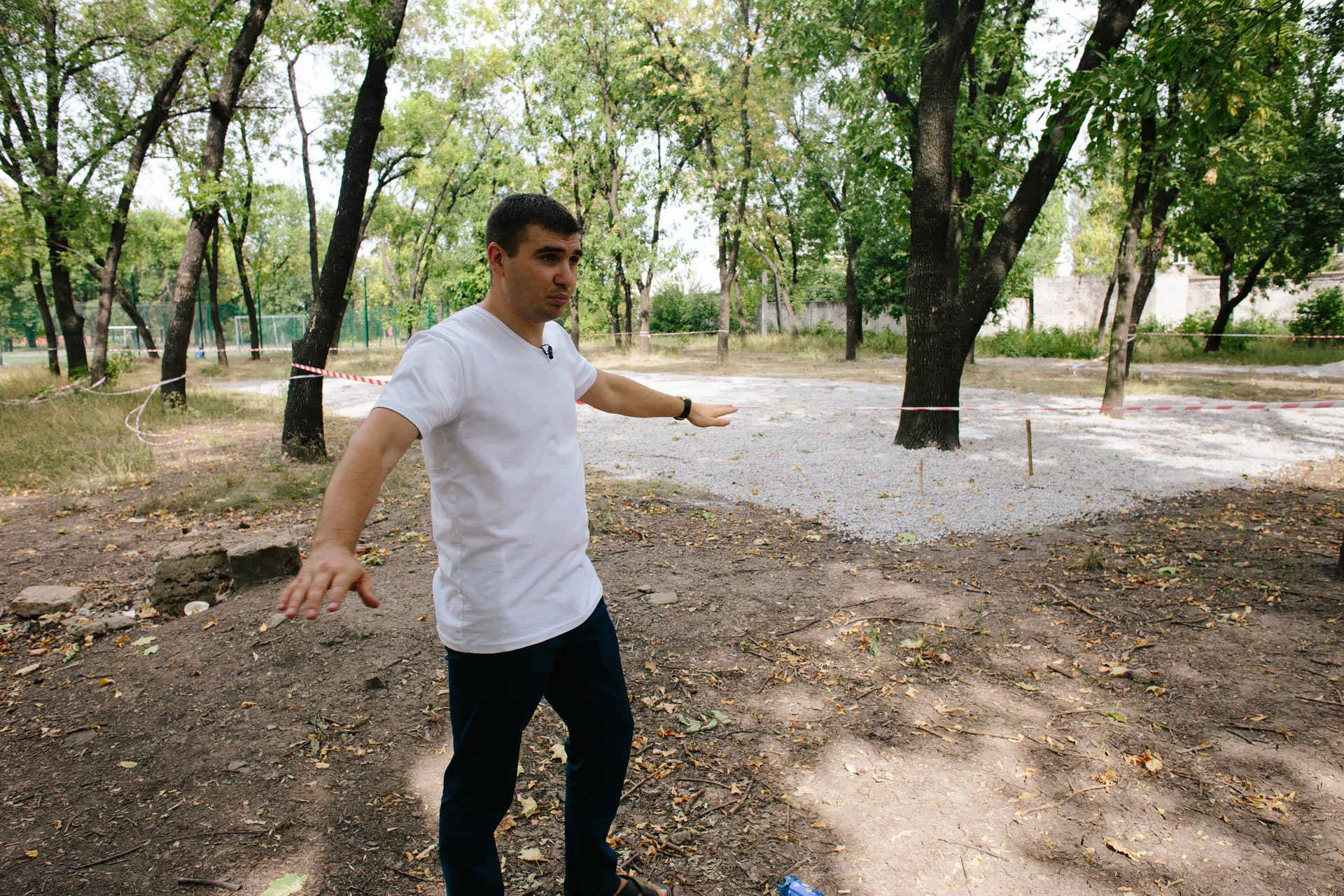
Six years ago Vladyslav together with the like-minded people created NGO Tvortsi Istorii (“History Makers”) in Dobropillia. The NGO organizes sports grounds and cultural sites:
— Our mission is to develop a successful and healthy lifestyle. Young people had been playing volleyball near the school for five years. However, there is an asphalt, which can cause injuries. Thus, there was a need to arrange a sports ground. We helped to write a project application, received funds, and picked a suitable place in the park. The city authorities provided us with sand and gravel, and the young volunteers did all the work. This place gradually becomes more popular. This is an example of the initiatives that we support and help to implement.
Vladyslav points in the direction of Skver 21 (“Garden Square 21”), which is being built now near the Community Center in Dobropillia. The local activists and NGO Misto-Sad (“City-Garden”) were developing and approving the concept of this space for the five months:
— The foundation for the amphitheater, which we designed, is already under construction. The special feature of this project is its eco-style. Such was the request of the town residents. We live in a mining and industrial town, everything is very grey here, that is why we wanted to make this place using wood, and not the usual metal. We understand that the mines will be closed eventually, but the city should remain interesting. New interesting places should appear instead of the standard “halls of culture”. Perhaps, those places should be the ones created and designed by ourselves with likely no similar places in Ukraine.
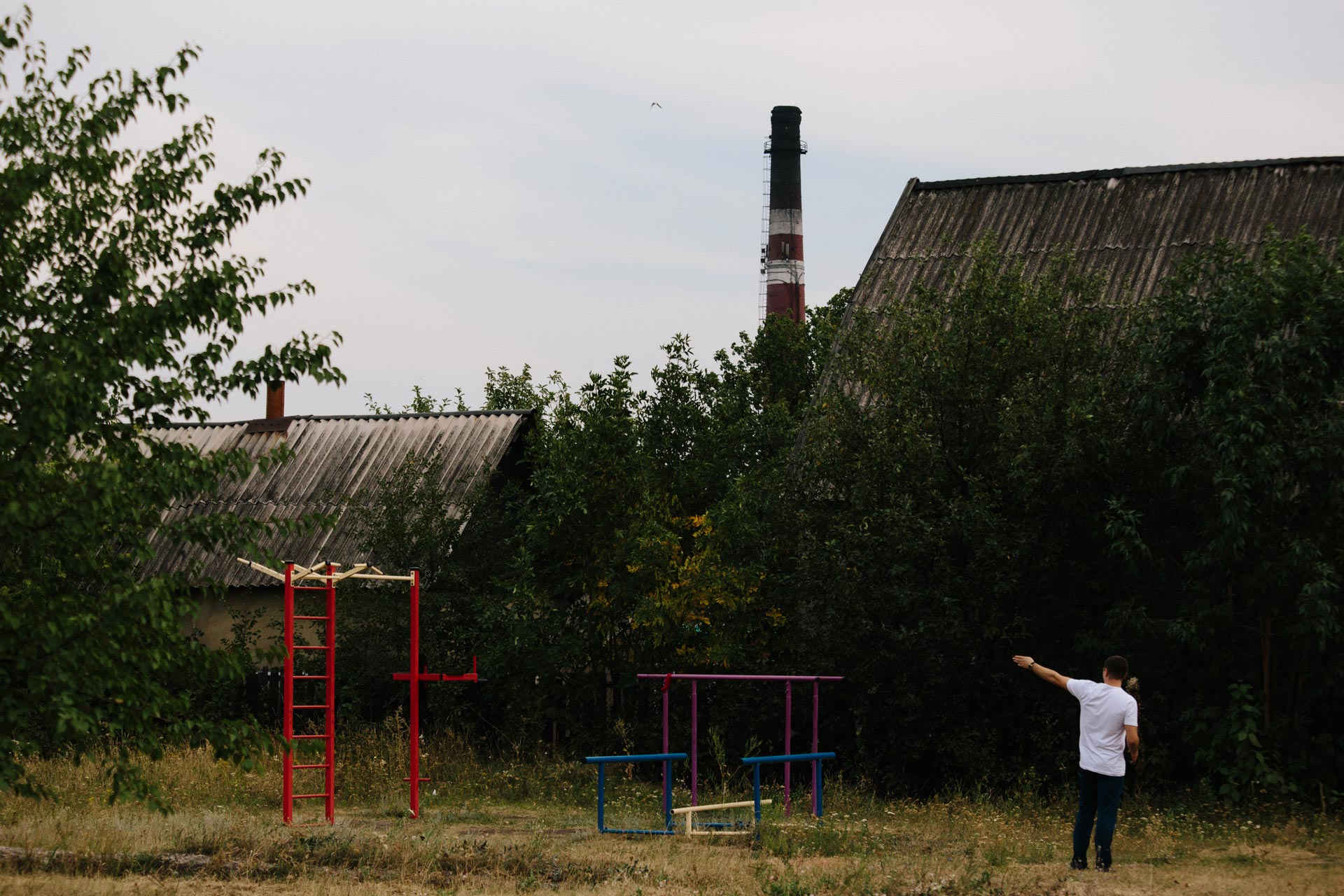
Skver 21 will be a site with a roof, made completely out of wood, so that events can be held even when it is raining. There should also be a street furniture and a screen for movies, forums, musical and other events:
— Since the area is located at the 21 Festyvalna Street, the NGO Misto-Sad will organize 21 cultural events here during the development of the space. In the future, we will be organizing everything by ourselves. There is also a club of Skver 21’s friends: these are the people who take care of the site and do something for it in general. People are requesting something new, something that would make the city interesting so that people would come here and stay.
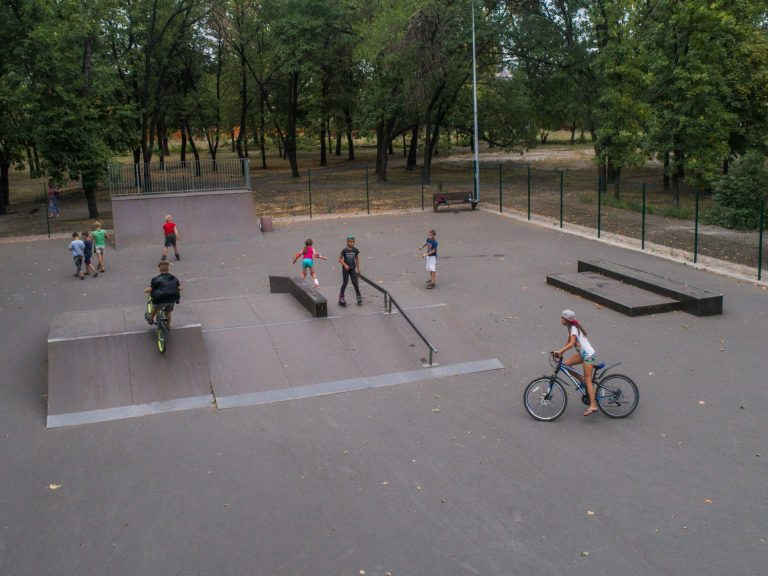
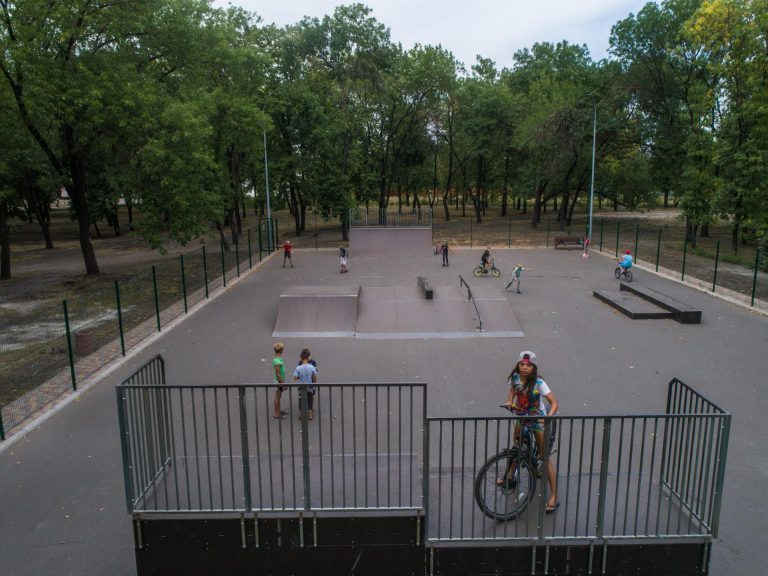
slideshow
In the summer of 2018, Vladyslav Burkhovetskyi initiated the fundraising for the creation of an informal public space in Dobropilska Irlandiia (“Dobropillia’s Ireland”). This is how the bushy wasteland at the outskirts of the town is called, where the locals go for barbeques, bike rides and sledging in winter:
— Last year we got a mini-grant to build a sports ground here. There are similar sports grounds in the city, but there is no civilization at all at the outskirts of the town. When we installed the bars here, we have noticed a lot of interest from the children and young people. We understood that we could do more for them here. Therefore, we continued to improve this area with the team of Kod Mista (NGO, “City Code”). We create a public space where the locals can meet up, where various cultural and sports events can take place.
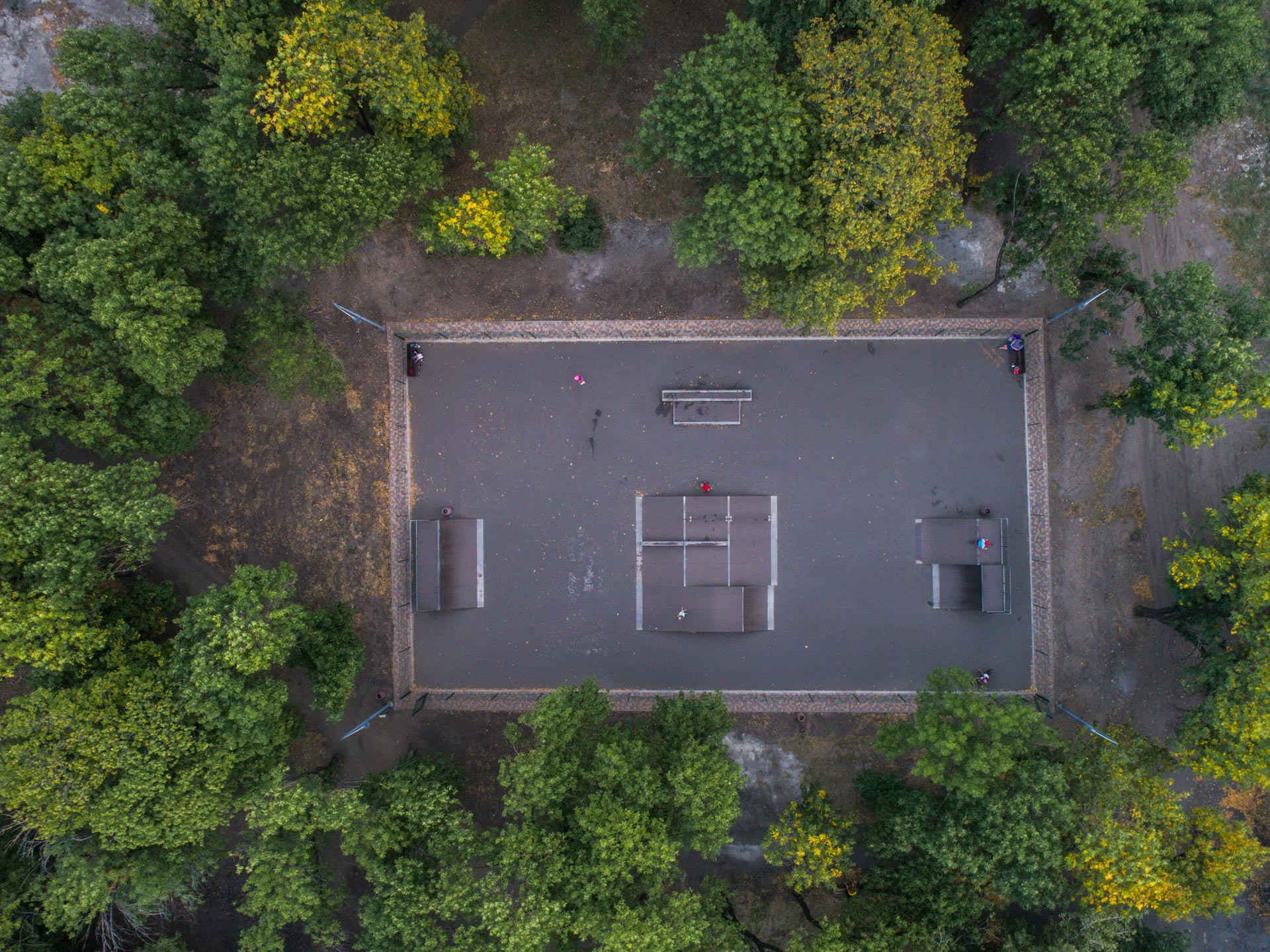
In a place where the wasteland used to be previously, there is an area called Nepustyr (t/n -“not a wasteland” in Ukrainian) now. Vladyslav plans to further develop and expand this place:
— There is a gulch next to it and a beautiful, interesting landscape. We will continue to think how to develop this area so that the outskirts of the city are civilized too. The atmosphere is completely different here, and kids wouldn’t need to walk far away to get to the nearest sports ground.
— I have noticed the following trend: when someone purchases and installs everything for people, they just learn to wait and think that someone owes them something. However, when people put their own efforts into fundraising, when they bring their instruments and find the time to improve the place, not only do we get public spaces but also responsible residents who are setting a new trend for the society.

